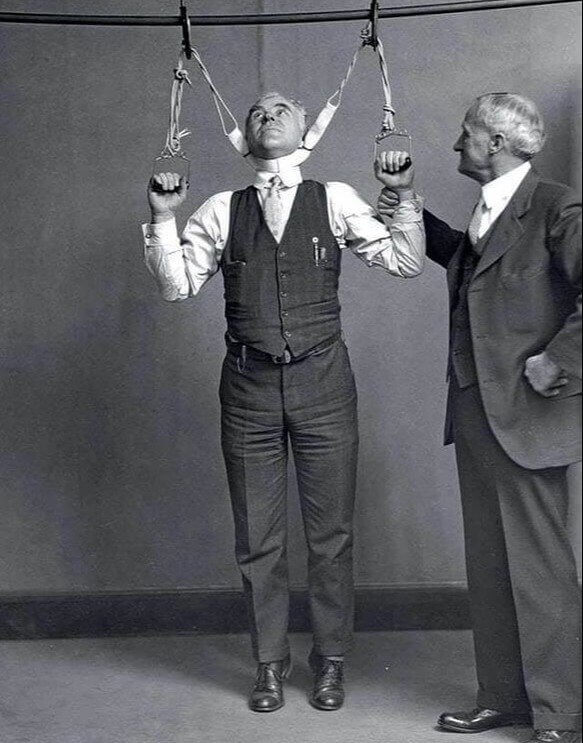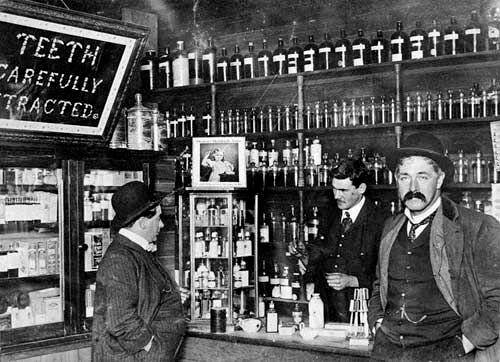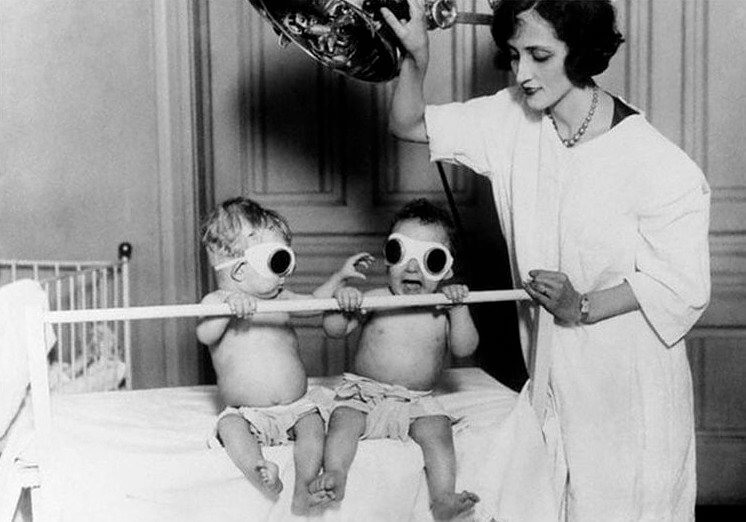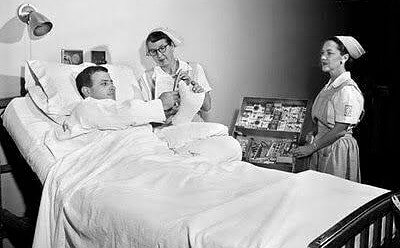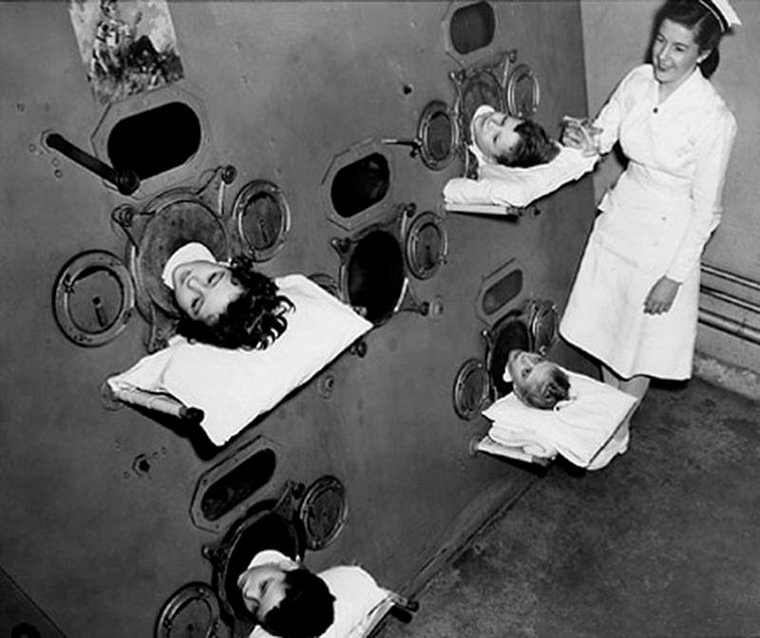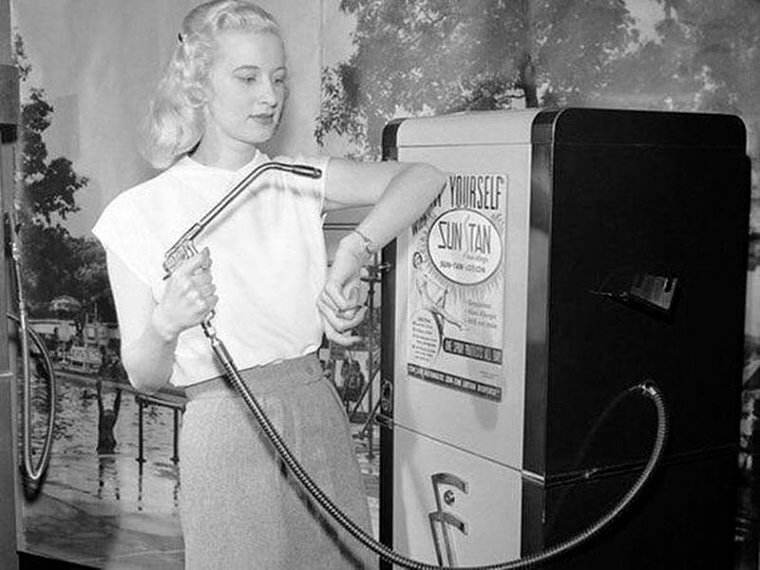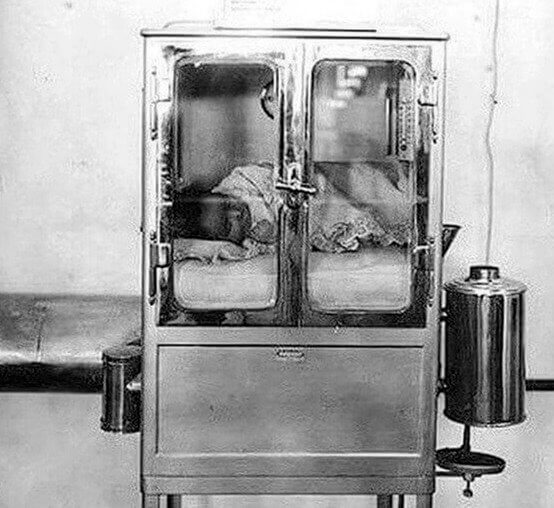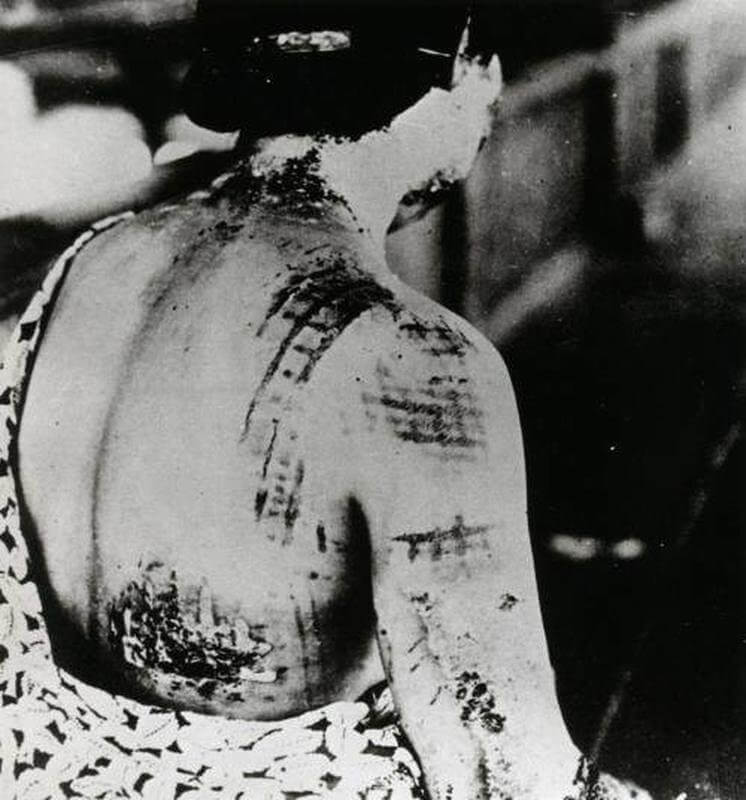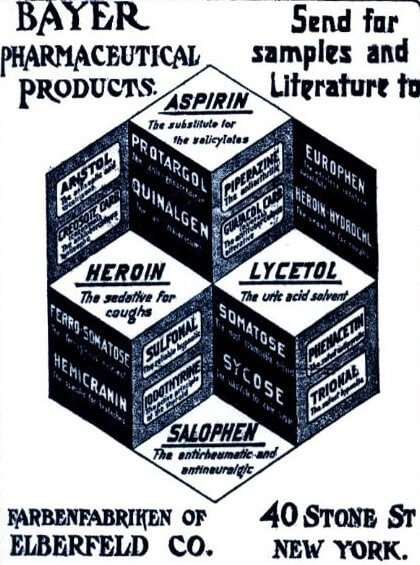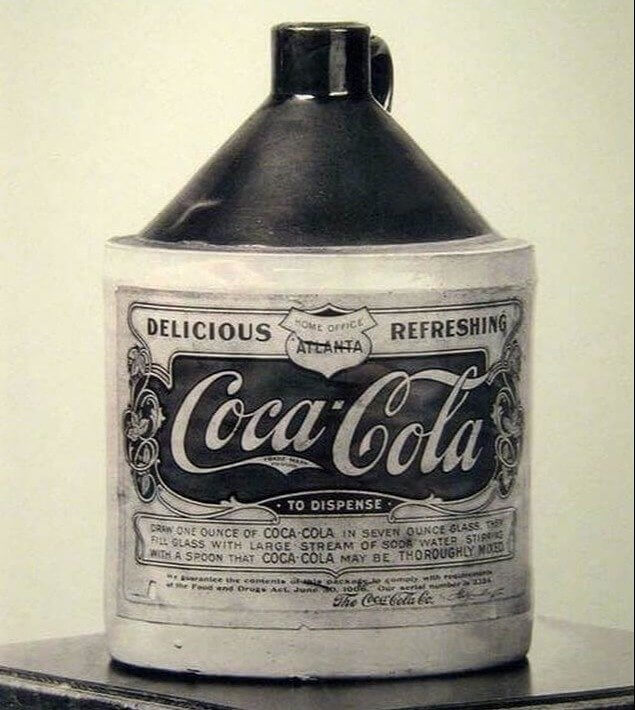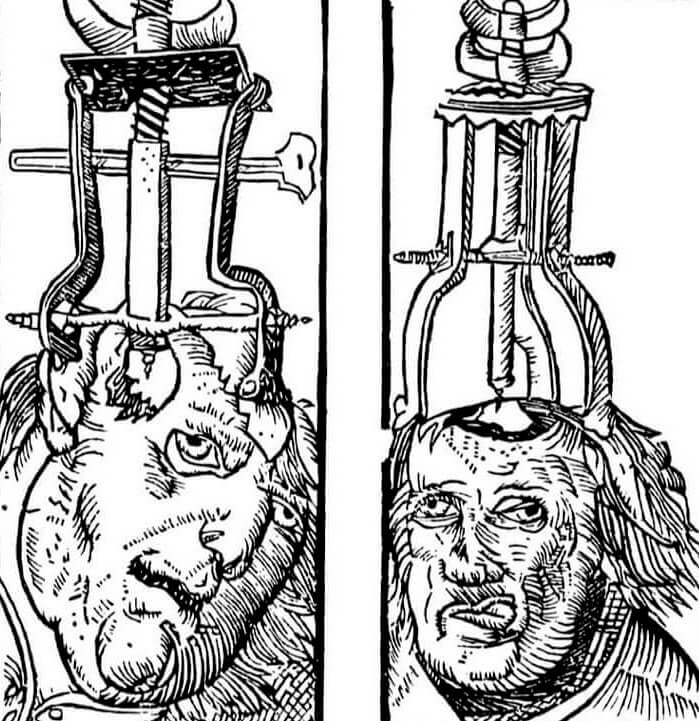Stretching Device To Improve Appearances
The 1930s turned out to be a challenging decade, with much of the world at war. But before the war was declared in 1939, there were clearly pressing issues for men around their height — or lack of — and some of them decided to take drastic action. This bizarre stretching device seen below claimed to increase height by an incredible 2 to 6 inches by elongating the spine.
There's no denying that the spinal cord can be pulled out of place — as can the shoulder or the knee — so this is definitely not advisable!
Lobotomies In Mid-Century USA
One of the medical treatments those living in the modern-day can feel most relieved has gone away is lobotomies. The severing of connections between the brain's prefrontal lobe was done to change behavior. It was performed on veterans, prisoners, political dissidents, and even misbehaving children between 1939 and 1951 over 18,000 times in the USA. Even back then, this procedure was deemed controversial. It's not hard to see why!
Possibly the most frightening aspect of the lobotomy craze was the often forced nature of it. Anyone who spoke out against the status quo was deemed mentally unwell and, therefore, in need of the procedure.
That's One Gross Way to Ease A Hangover
Apparently, Rabbit Poop Tea was once used to cure hangovers. We're not entirely sure we believe this one. But legend has it that a popular hangover cure was a cup of tea consisting of rabbit poop in the Wild West. Just... why? We understand that sometimes a hangover will make people "feel like crap," but surely drinking this stuff isn't the answer! This seems like a far less appetizing option than a fried breakfast.
Perhaps this wasn't so much a hangover cure as a sure-fire way to make your body quickly remove any alcohol left in your system. After all, hangovers and horseriding can't have been a good mix!
Treating Ringworm
Author Dr. Thomas Jefferson Ritter offered some curious cures in his book Mother's Remedies, including treatment for ringworm. Anyone who has suffered from ringworm knows how much of an irritating, ugly fungal infection it can be and probably got rid of it with a topical lotion or a course of antibiotics. However, back in Ritter's day, he suggested that a paste made of gunpowder and vinegar be applied to the infected area.
Ritter recommended that the patient repeat the process until the ringworm disappears if the solution didn't work the first time around. We're guessing people went through plenty of gunpowder and vinegar trying to make this one work!
This Strange Victorian Trend Of Posing With The Dead
Those living in the Victorian era would routinely pose for death photos. Also known as memento mori, which translates to ‘remembering that you died,’ these bizarre images were essentially family portraits taken with the recently deceased. Typically, the corpse was made to look like it was sleeping peacefully — particularly in the case of children — although, in some instances, an artist would paint pupils onto the deceased's eyes to make them look alive.
This weird trend feels more like a cultural tradition than a change in scientific understanding, so we worry that the craze might return one day. Let's hope that we're wrong!
An Outdated Remedy for Dried Skin
Dry and chapped hands might not sound like a particularly bad condition, but we live in times when there is an abundance of creams available in drug stores to moisturize with. However, back in the early 20th Century, when Dr. Ritter first published his Mother’s Remedies: Over One Thousand Tried and Tested Remedies from Mothers of the United States and Canada, access to moisturizing products wasn't as simple as a quick trip to the store.
Ritter's remedy was a little bit odd, suggesting that patients "put sour cream in a cloth, bury it outside overnight, then unearth it and apply the sour cream the following day."
Treating Asthma With Cigarettes
Yes, you heard that right. Knowing what we know today about cigarettes and the damage they do — especially to the throat and lungs — it's astonishing to learn that they were once considered a remedy for asthma, of all things. However, during the late 19th and early 20th centuries, specially-made cigarettes were prescribed to treat the common lung condition. These cigarettes contained stramonium, belladonna, and tobacco and were highly toxic.
In fairness, it wasn't until relatively recent times that smoking cigarettes' true, devastating effect was widely known. Lung cancer was developed via passive smoking in many people as recently as 30 years ago.
A Bizarre Treatment For Heart Palpitations
The British evangelist John Wesley certainly made a name for himself with some of his wacky medical remedies. Well, not-so-wacky at the time, perhaps. Heart palpitations are definitely concerning, and, in a vicious cycle, the panic they cause can often make them worse. Wesley's remedy for palpitations was curiously simple — "drink a pint of cold water, apply outwardly a rag dipped in vinegar, and be electrified." Okay, John.

To be fair to Wesley, drinking a pint of cold water is rarely a bad idea. The vinegar-drenched rag? We're not too sure about that one. Palpitations might not be cured, but it's likely to quench thirst at the very least.
Rectal Dilators To Cure Various Health Problems
The late 1800s certainly served up some interesting medical treatments, one of which was the prescribing of rectal dilators to cure various ailments, from insanity to chronic constipation. We're not quite sure what the justification was for this particular procedure regarding mental illness, but hey, this was the 1800s! Even though the dilators were sold on the understanding that medical professionals would administer them, there was an outcry by people at the time concerned that the rubber objects might be used for more sexually deviant reasons.
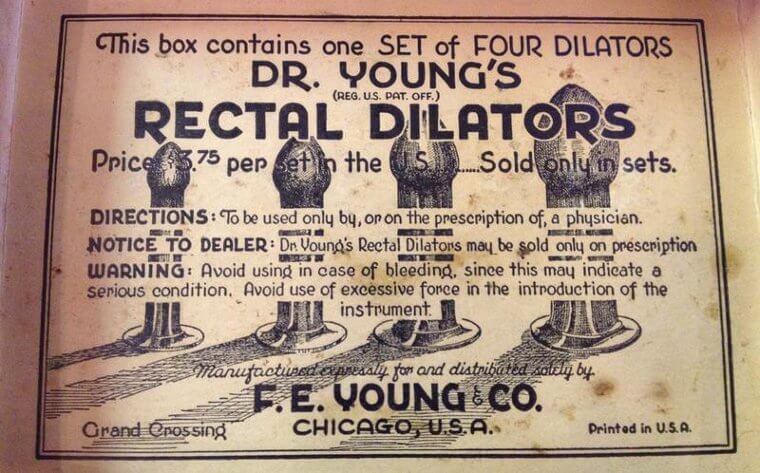
Unfortunately for 'Dr. Young,' the dream (or should that be fantasy?) was over in 1940 when the U.S. Attorney’s office seized a shipment of the rectal dilators and accused the company of misleading labeling.
The Original Anti-Depressants
We're seriously rolling back the years with this one. In fact, we're going back centuries. The Red Book of Hergest is a 1392 Welsh manuscript containing many herbal remedies, including an unusual recommendation for feeling happier. According to the book, "if you would be at all times merry, eat saffron in meat or drink, and you will never be sad: but beware of eating over much, lest you should die of excessive joy."
It's a slightly bitter-sweet suggestion, as it's unclear what is considered excessive consumption. Are we talking half a teaspoon, or do they mean a whole bag of saffron? We hope nobody puts that to the test.
Using Nux Vomica For Headaches
Anyone familiar with the strychnine tree, also known as nux vomica, will be shocked to learn that Dr. Ritter recommended this incredibly poisonous deciduous tree in his 1910 medical journal as a cure for headaches. He suggested mixing a drop of tincture of nux vomica in a teaspoonful of water. We're not sure what this would actually do to the head since the tree contains strychnine and brucine, two toxic chemicals.
Worryingly, nux vomica is still commonly used as a natural remedy for many different symptoms and disorders today. It's also used to kill rats, so we'll let you be the judge of whether it's a suitable remedy!
A Dangerous Sun Tan Vending Machine
Back in the mid-century USA, suntan vending machines began popping up everywhere — near swimming pools, tennis courts, and beaches. Star Manufacturing promised ladies a quick and easy way to get a deep, dark tan without the hassle of sunbathing for hours. In theory, this sounded like a pretty exciting product. But there were serious safety concerns around the vending machine since nobody really knew what the spray tan substance contained.
Star Manufacturing's hot new product ended up being a fad, only lasting a couple of years before they disappeared from the market. Ladies of the 50s, it seems, opted for the tried and tested instead.
Using Radium For A Variety Of Ailments
Amazingly, radium was once considered a widely accepted medical treatment and was used to cure a variety of ailments including arthritis, impotence, and even aging. (Not that it's possible to "cure" aging, per se.) During the early 20th Century, the Revigator — a ceramic water crock lined with radioactive materials — was a regular feature in homes across the US. The machine was designed to be filled with water overnight, which would be irradiated by the uranium and radium in the liner, and then consumed the next day.
We know today, of course, that radium does not reduce aging. In fact, it's likely to speed up the aging process in that it might take you to an early grave!
A Suspicious Cure for Rabies
Rabies was a real scourge across Europe in the 1700s, so it was at the front of physicians' minds. Unfortunately, for anyone living in that era who was bitten by a rabid dog, the chances of survival were slim. It wasn't until 1885 when Louis Pasteur and Émile Roux developed a vaccine that rabies was somewhat brought under control. Decades before Pasteur and Roux's breakthrough, it was The Book of Phisick that gave patients hope.
Did this 18th Century remedy work? It's unlikely. It suggested, "taking 40 grains of ground liverwort and 20 grains of pepper in half a pint of milk... take this quantity four mornings together, then use of cold bath, every other day, a month."
Electric Bath Used To Treat Rheumatism
It's hardly a surprise that the early 1900s was an era where somewhat questionable medical practices were routine, including this bizarre attempt at treatment for Rheumatism. Back then, medical pioneers thought that issues with the joints could be dealt with by shock therapy, along with a water bath. Technicians would submerge a patient's limbs in tubs of water and run mild electric currents through them, presumably with the hope that this would alleviate joint issues.
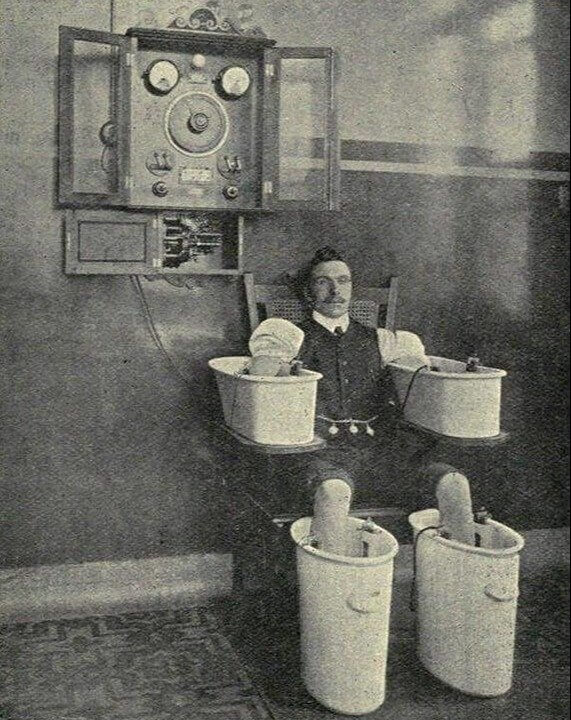
Over 100 years on, we can clearly see that even though mild shock treatment is now commonly used for pain relief, mixing water and electricity is definitely a dangerous idea!
Imagine if We Still Used This Against Hay Fever
Oh, how times have changed. These days, if you experience the onset of hay fever, you tend to head for an aisle in the drug store and pick up a packet of antihistamine tablets. Not so much in the early 20th Century. Published in 1910, Dr. Thomas Jefferson Ritter's Mother’s Remedies: Over One Thousand Tried and Tested Remedies from Mothers of the United States and Canada recommended a “four-percent solution of cocaine” spray up the nose.
It's a surprise the entire population wasn't addicted to catching hay fever in those times! Bizarrely, this was also prescribed for indigestion, fatigue, eye pain, and hemorrhoids. What a versatile medicine!
A Painful Cure for Cataracts
Back we go to the 10th Century, and Bald's Leechbook specifically, which recommends putting burnt periwinkle flowers and honey in the eyes to treat cataracts. Now, we're no medical experts here, but honey in the eyes? That doesn't sound like a great idea, to be honest, unless the aim is to stick them together! Luckily, we live in an age where surgery is an option to remove cataracts that otherwise have no cure.
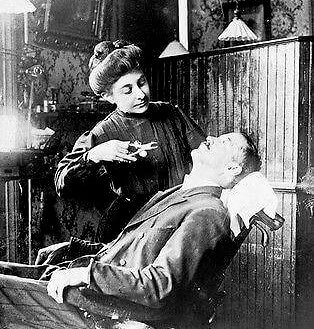
In fairness to those living in the 10th Century, natural remedies were probably worth a go since no substantial medical breakthroughs would happen for centuries after.
Victorian "Murder Bottles" For Kids
During Victorian times, corsets became all the rage for women. These items of clothing we not only constricting but also incredibly time-consuming to put on and take off, which may have been why breastfeeding fell out of fashion for some women. While this might have been fine for mothers, it was bad news for their children, who ended up feeding with bottles that were difficult to clean and could easily harbor bacteria, leading to the deaths of several children.

Once it became clear how harmful these baby bottles were, people started referring to them as "murder bottles." They went out of fashion like the corset eventually did!
Yet Another Unpleasant Hangover Cure
Such is our historical obsession with enjoying a glass too many of alcohol; it's no surprise that there have been more suggested hangover cures than is even possible to count. We've always wanted to enjoy the fun times without having to deal with the inevitable consequences the following day, and everyone feared the self-inflicted, booze-related banging headache. Thousands of years ago, some tried to combat this by eating pickled sheep's eyes.
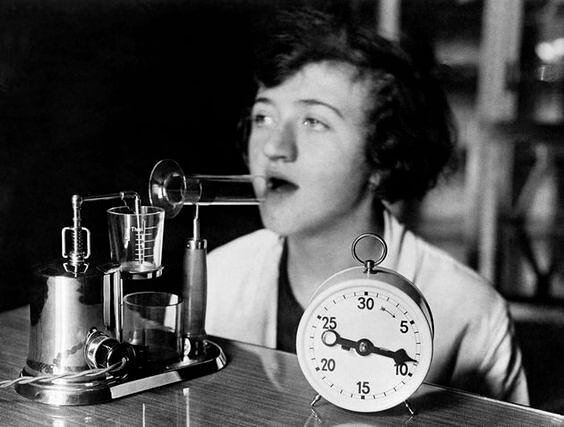
This interesting culinary choice was consumed for breakfast — presumably, if the sheep eyes didn't help soak up the hangover, they at least made you throw up! Bizarrely, this tradition continues to this day in some places.
Insulin Shock Therapy For Mental Disorders
One of the more gruesome, archaic methods for treating (or attempting to treat) mental illness was insulin shock therapy, also known as insulin coma therapy. Developed in Austria in the 1920s, enormous insulin doses were prescribed to a patient to induce them in a series of comas over several days. Usually, the therapy was stopped after 60 comas, but shockingly, there were instances of the treatment continuing for more than two years.
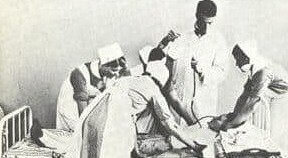
Incredibly, it wasn't until the early 1950s that British doctors were arguing against the use of insulin shock therapy. By the 1970s, the treatment was no longer considered helpful for mental disorders, and its use has now been discontinued in the US.
Treating Swollen Eyes With The Eyes Of a Snappy Animal
You'd understandably be shocked if, when complaining to your physician of swollen eyes, they suggested crabs' eyes! However, according to Bald's, an Old English medical text probably compiled in the 9th Century, sourcing a crab is exactly what should be done. The medical text says to "take a live crab and cut its eyes out, throw the crab back into the water, then apply its eyes on the neck of the man who hath need."
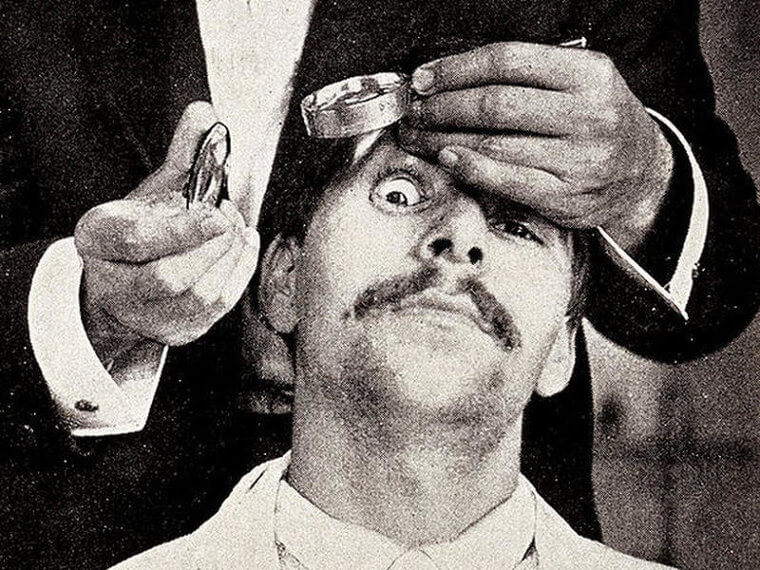
Now, we're not entirely sure why the crab's eyes needed to be placed on the neck of the patient — did they test placing them on different parts of the body?! Needless to say, it probably didn't work.
Electric Belts as Therapy
Electricity-based therapy was all the rage during the Gilded Age, with it believed to be a cure for an array of ills. A gentle electrical current was thought to stimulate additional energy within the body and benefit two desirable areas in particular for men — male pattern baldness and impotence. Applied with or without the supervision of a doctor, mild electric shocks were administered to induce in the wearer the desired result.
Electric shock therapy might sound insane to our modern ears. Still, it was actually an improvement on the 19th Century French prescription of flagellation with a small whip directly to the affected area. Ouch!
Treating Swollen Body Parts With A Fox Tooth
We're not entirely sure what Bald's obsession was with the anatomy of animals, but he sure placed a lot of medical value in them. In this case, the old medical text recommends a fox's tooth as a cure for swollen body parts. The text says to "take one of its teeth out, secure it in a fawn’s skin, then place the skin on the swollen body part." It's unclear for how long.
What's incredible about this treatment is the assumed ability of the patient to source these ingredients. Trying to get hold of a fox's tooth is one thing, but a fawn's skin? Good luck!
Make Bruises Disappear Using A Powder Made From Human Bodies
We can safely say that this is the weirdest medical cure on this list. If not, we're in trouble! In 16th and 17th Century Europe, the use of human bodies in remedies became extremely popular, appearing in medicine for everything from headaches to epilepsy. This trend wasn't good news for the tombs and graveyards of Egypt, which were raided furiously for their human remains. Got a bruise? Don't worry, just rub some dead body on it!
If you didn't fancy rubbing yourself with human remains, the alternative recommendation was to turn it into a powder and ingest it via a drink. It sounds crazy but was reportedly used by the French King Francis I and artist Francis Bacon.
A Non-Scientific Cure for Typhus
People worldwide pray for their illnesses to subside, so it's not that overly strange to discover that prayer was an old-time recommended cure. Specifically, it was typhus — the infection spread by lice, fleas, or mites — that had a religiously oriented treatment in the 10th Century. Patients were told to go outside, write a prayer on a piece of paper, and then hold it to their left breast.
We presume the left breast was significant due to the heart, although it's not clear why the prayer written down was relevant. Unfortunately, this treatment wasn't able to prevent the millions of deaths the infection caused.
The Gentleman's Guide to Amputation
In 1743, the German anatomist Lorenz Heister chronicled his treatment recommendations for Bible cysts, which appear on the hands and wrists. As you might expect from an 18th Century remedy, these recommendations were pretty wacky and included strapping a bullet — that had killed an animal, no less — to the cyst or touching the cyst with the hand of a dead man. How dead? We're not sure. Dead woman? No, it had to be a man.
Another bonkers remedy Heister recommended was thwacking the cyst with a heavy book — such as a Bible, which is how they got their name! Your physician in this day and age is unlikely to recommend this course of action.
Leeching Kit Used For Bloodletting
Clearly, medical expertise in the Middle Ages wasn't what it was in the 19th Century, let alone today! Therefore, it should be no surprise to learn that they practiced some pretty questionable medical procedures. One such procedure was bloodletting by way of leeches. Yes, leeches. The feeling among physicians was that the body needed a release from the amount of blood flowing through its system now and then, a reset if you will.

The cure, in their mind, was bloodletting. Leeches were placed onto the skin under these cups, which also provided suction to help "pull out" the sickness directly through the skin.
Heroin For Cough Syrup
This might sound unbelievable, but the drug heroin was once trademarked by the German drug manufacturer Bayer as a remedy for cough syrup. Containing diacetylated morphine, Bayer marketed the drug as a safer and more effective choice than those containing morphine or codeine. Bayer introduced heroin to the market in 1898 and, like morphine, was available to purchase over the counter without the need for a prescription from a doctor!
Heroin as a brand wasn't actually removed from the US market until 1910, although it was still available via prescription from a physician. Twenty-four years later, the highly addictive opioid was entirely banned from the United States.
Preventing Tipsiness With Ground Up Bird Beaks
There have been some very peculiar remedies throughout history — some of them downright scary and some of them pretty amusing. This one certainly falls into the latter group. In ancient Assyria, bird beaks were ground up, combined with myrrh, and eaten as a method to avoid getting tipsy. Yes, you heard that right. Bird beaks! Sure, plenty of hangover cures sound unusual, but they don't typically involve ground animals.
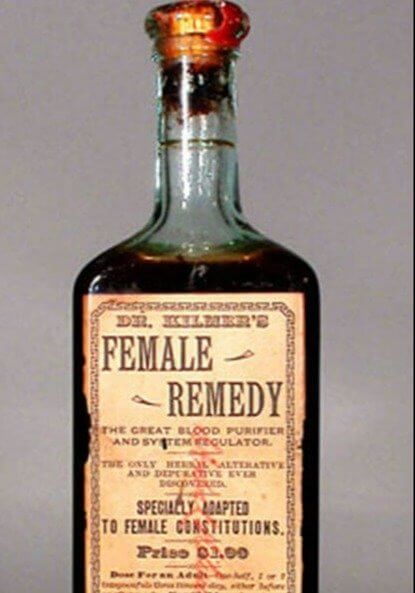
Perhaps this so-called remedy was a way to convince the ancient Assyrians not to drink much alcohol? After all, you'd think twice about having one too many beers if you knew bird beak was on the menu!
A Magic Word To Cure Malaria
An incredible breakthrough in the fight against malaria has arrived in the form of a vaccine this year, a monumental moment in the history of a disease that still claims over half a million lives every year. However, medical science hasn't always been on the front foot. A Roman physician in the 3rd Century CE is said to have recommended patients write the word "Abracadabra" over and over, removing one letter from the word each time.
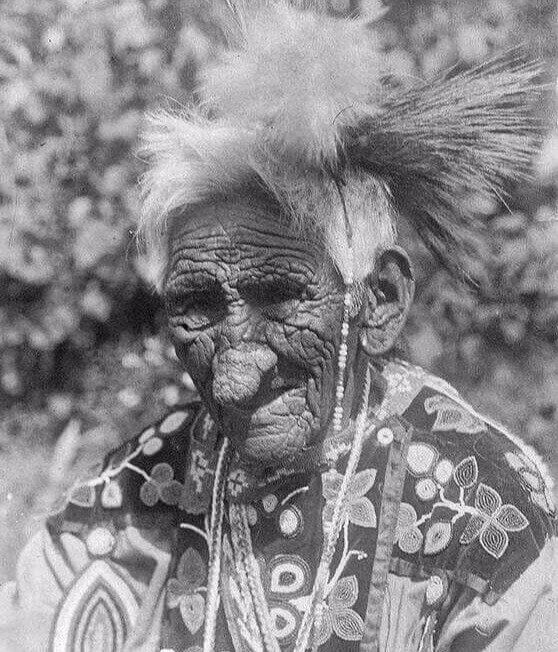
Once the patient was left with a single "A" on the page, they were then told to wear it around their necks for nine days before tossing it into an east-running stream. (No, it didn't work.)
Boiled Carrots To Treat Asthma
It's safe to say that 18th Century England wasn't exactly a hotbed of medical, scientific success, although to be fair, nowhere in the world really was at that time. Still, the British evangelist John Wesley's recommended remedy of a fortnightly diet of boiled carrots to cure asthma was pretty crazy. This suggestion was first proposed in the natural medicine book Primitive Physick, or, An Easy and Natural Method of Curing Most Diseases.
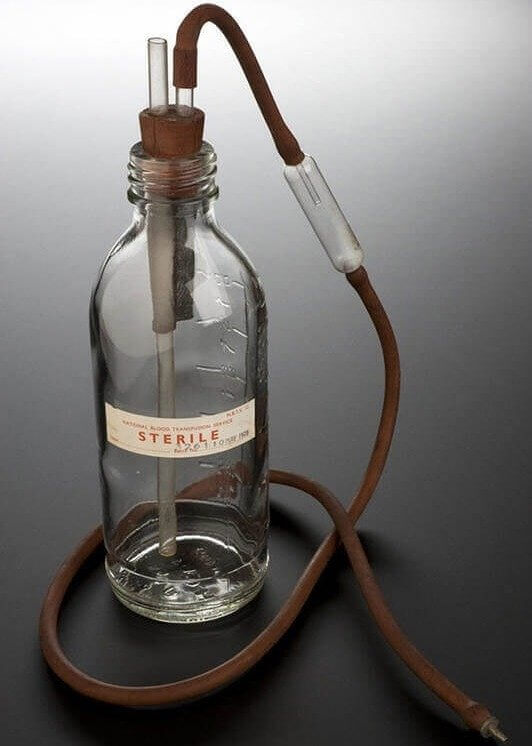
While there is no link between a healthy helping of boiled carrots and an alleviation of respiratory ailments, it has to be said that an increased volume of vegetables into the diet would at least have had some positive benefits — mainly for the eyes, though.
Hair And Deer Bone Powder To Cure Epilepsy
Another book from the same era that suggested boiled carrots as a cure for asthma was also responsible for another interesting treatment for those with epilepsy. The Book of Phisick recommended cooking a strong man's hair with the leg bone of a deer, turning it into powder, and consuming in the build-up to a new moon. There has long been a debate as to whether the moon affects the frequency of epileptic seizures.
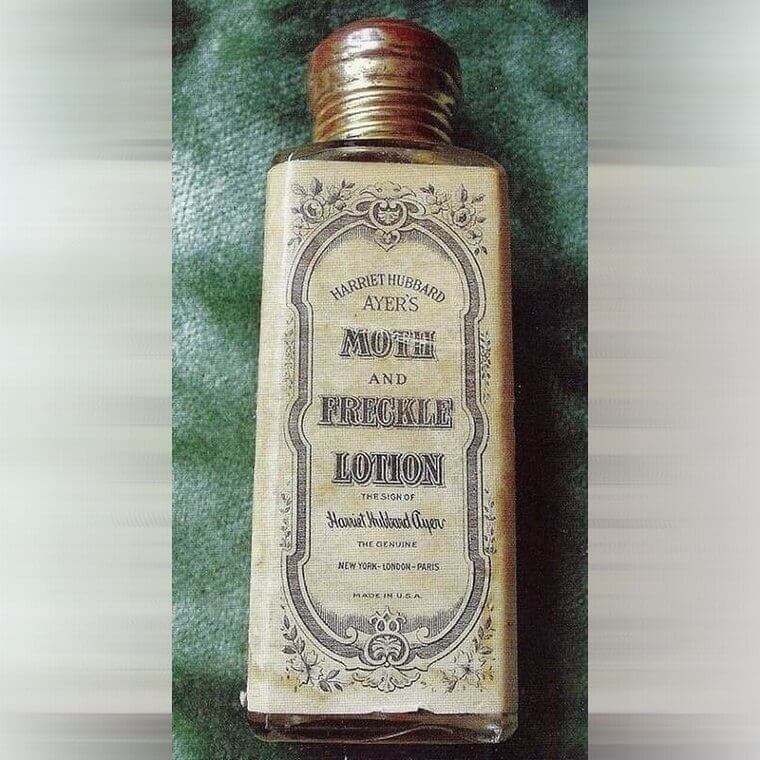
Modern-day studies suggest absolutely no correlation between the fullness of the moon and the frequency of epileptic seizures. However, the proximity to a full moon seems to be the least of the issues with this bizarre remedy.
Lancet For Bleeding Patients
Bloodletting as a medical practice lasted a remarkably long time. The procedure can be traced back to the 1600s when it was performed by barbers, who doubled up as surgeons. Two centuries later, it was still seen as a cure for unwell patients and a routine preventive — in large part because knowledge at the time offered medical professionals no other options, and they felt they had to do something.
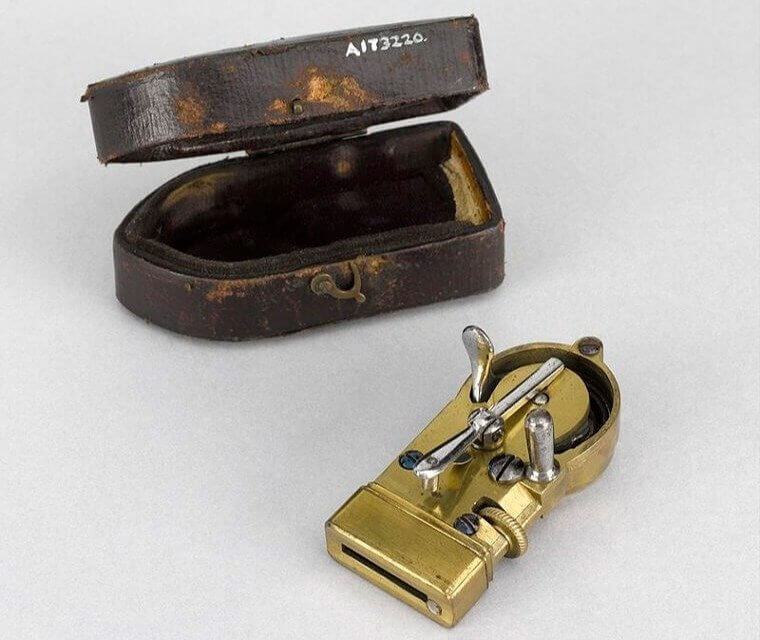
There has been a range of bleeding methods used throughout history, including leeches, cupping, tapping of arteries, and the opening of veins using a lancet — like the one pictured above from the 1820s.
An Ancient Remedy Involving Raw Veal
Even though they were enlightened ahead of their time — just look at their architecture, for example — Ancient Romans sure had some wacky ideas when it came to medical practices. One such method was an attempt to cure rabies if a person had been bitten by a mad dog. Some doctors of the time recommended opening the wound and placing a slab of raw veal directly on top.
Then, the patient was prescribed a diet of hog's fat and lime and a medicinal concoction of wine and boiled badge dung. Sure, rabies is nasty, but this "cure" wasn't too pleasant either!
"Soothing Syrup" To Alleviate Colic
Colic is when a healthy baby cries for a very long time, for no obvious reason, and is most common during the child's first six weeks of life. Parents will completely appreciate how worrying and frustrating dealing with colic can be — especially first-time parents — but even today, there isn't a recognized treatment for the condition. During the mid-1800s and early 1900s, however, 25 cents could get you a bottle of Mrs. Winslow’s Soothing Syrup.
Not only was this "Soothing Syrup" recommended for colic, but it was also a remedy for teething, diarrhea, and various pains. The syrup worked a charm. Why? Because it contained a large amount of morphine!
Treatment For Hemorrhoids
Hemorrhoids are swollen veins inside the lower rectum and can range from a mild (and slightly embarrassing) irritation to a major problem that requires surgery. According to historical records, hemorrhoids have been an issue for humans since 1700 BCE, and over the years, various treatments have been attempted — at varying degrees of success. One of these less desirable treatments was a heated iron rod inserted into the rectum by a doctor.

The idea was that hemorrhoids were engorged by blood, so placing the hot rod against them would cauterize the area and clear up the painful problem. Sound painful? It was!
Trepanning To Release Evil Spirits
This treatment isn't for the fainthearted — and thank goodness it was abandoned long ago. Up until the 18th Century, trepanning was a method used to release evil spirits from the human mind by drilling a hole in the top of the head and thus allowing the demon to escape. Trepanning was also used for less unusual ailments than demon-dispelling, such as removing shattered bone fragments from head wounds.
In fact, trepanning is occasionally used today to relieve pressure on the brain following hematomas, but they're performed in considerably different environments to what they were all those centuries ago.
Smallpox Vaccinations
The smallpox vaccine was the first successful vaccination ever developed, and it provided a defense against what was once one of the deadliest and most contagious diseases ever seen. The vaccine site itself tended to scab over, which after falling off, would leave a scar showing where the patient had been immunized. It became a sort of rite of passage for an entire generation of Americans, and the take-up of Edward Jenner's vaccine was responsible for disease's subsequent eradication.
Compulsory smallpox vaccination laws had been rolled out across Europe by the 1870s, but in the US, it was left up to the states to determine whether vaccines should be mandatory or not.
Mercury Treatment For Syphilis
1495 saw the first major outbreak of syphilis in Europe. At the time, it was believed the disease had been brought over from the New World following Christopher Columbus' pioneering voyage. Syphilis became known as The Great Pox (to differentiate it from smallpox), and it was such a devastating killer that finding a cure became a high priority. Mercury was applied to a patient in a variety of ways — rubbed directly into the skin, taken orally, or vaporized and inhaled.
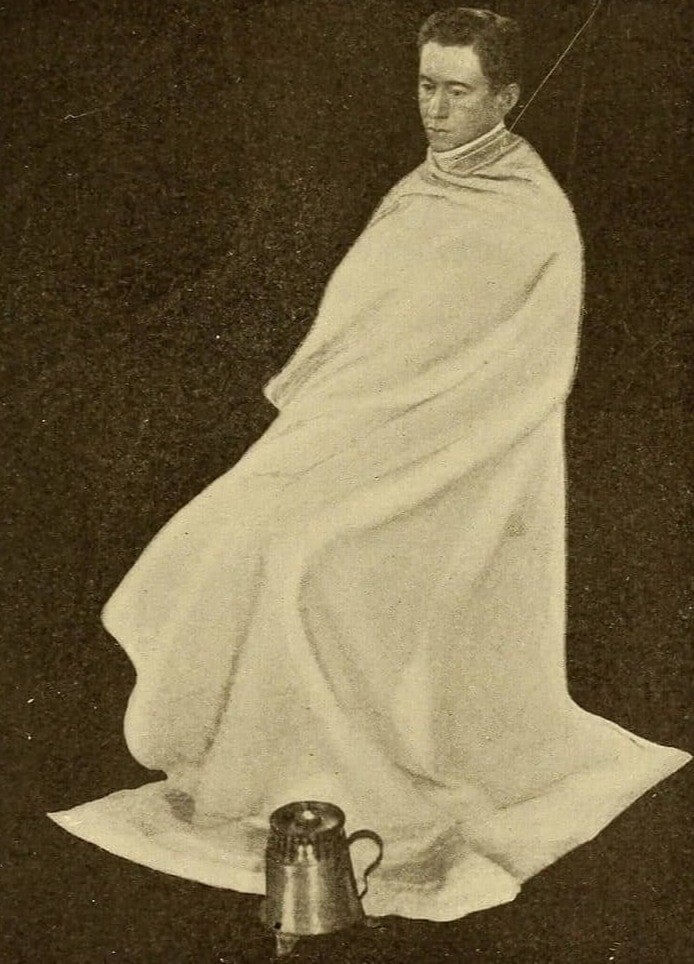
Exposure to mercury increased salivation and sweating, which were thought to help cure the disease. Unfortunately, this exposure had toxic effects, which led to the loss of teeth due to the degradation of gums. Amen to penicillin!
Tobacco Smoke Enema For Numerous Ailments
Given what we know about tobacco smoke today, it's incredible to learn that tobacco smoke enemas were a common medical treatment from the late 17th Century onwards. Tobacco smoke was forced out of a device similar to bellows into the rectum via a rectal tube. This procedure was believed to cure various ailments, including bowel disorders, hernia pain, cholera, and was even used as emergency respiration for drowning victims.
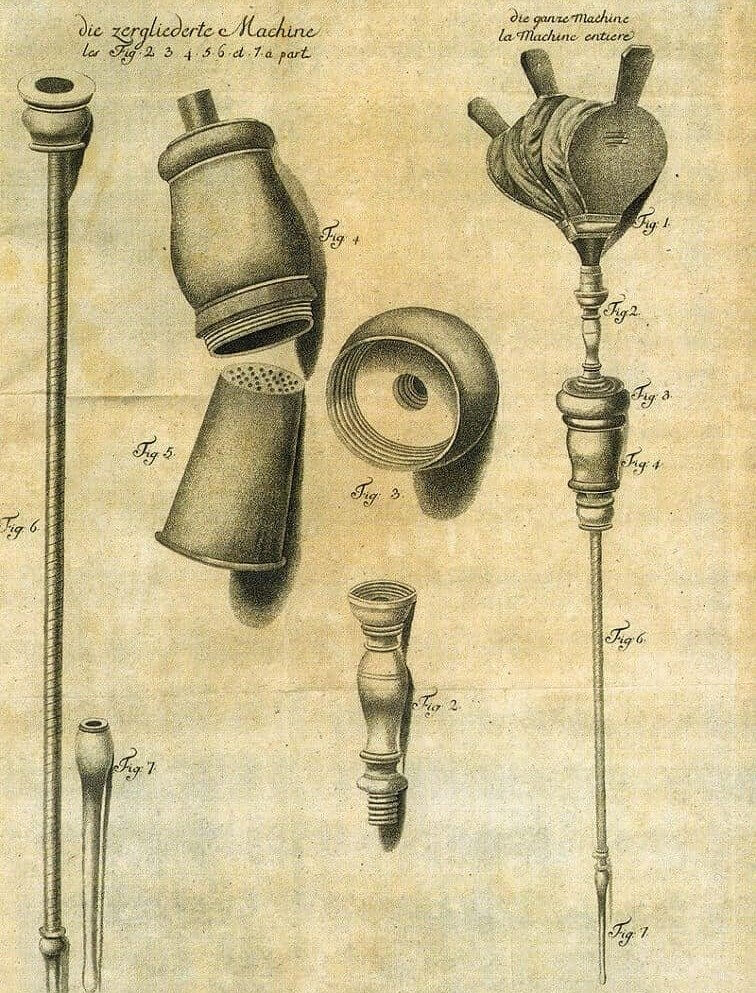
It wasn't until the 1800s that tobacco smoke enemas were reconsidered as a legitimate treatment. By then, nicotine had been declared a poison capable of having an adverse effect on the circulatory system.
